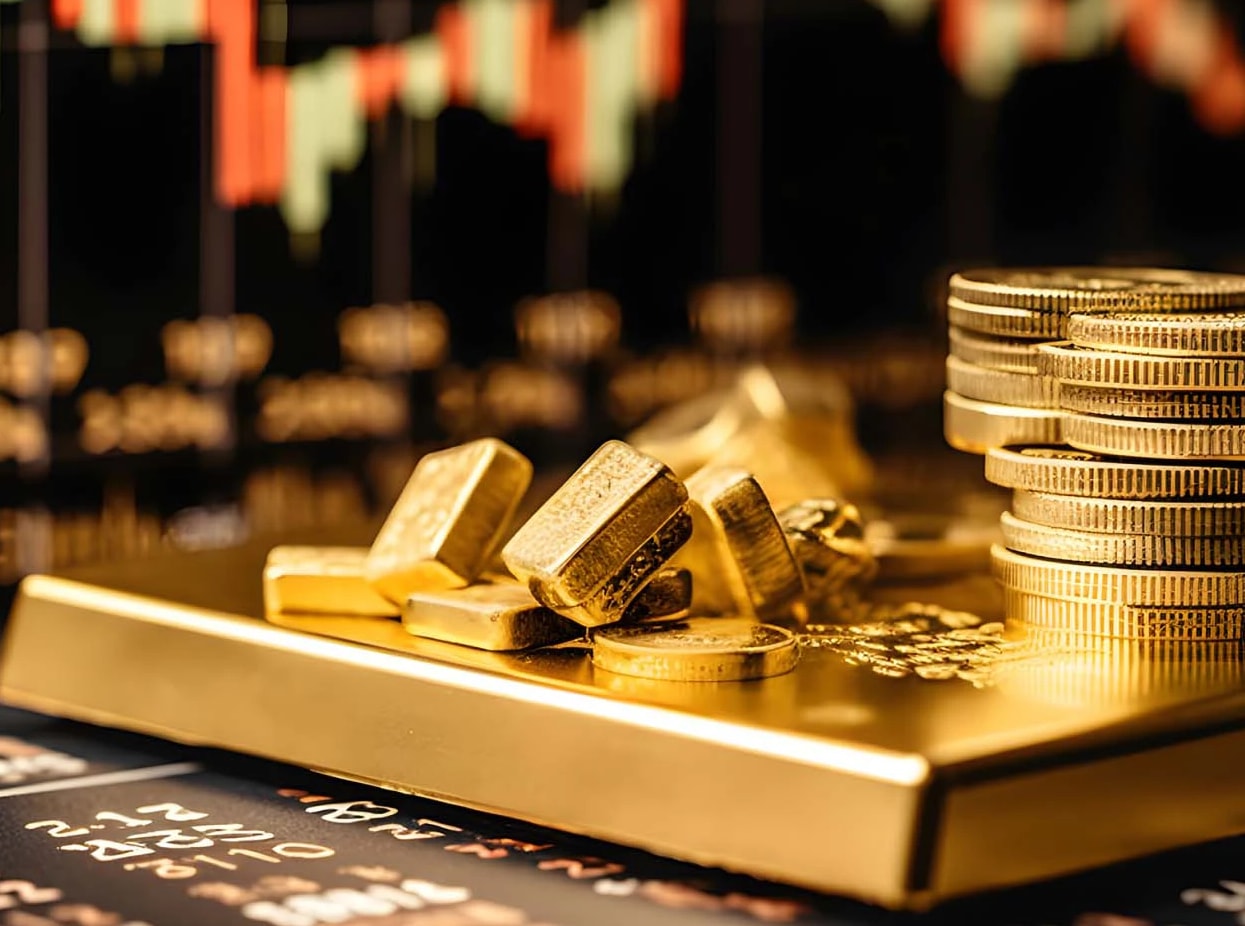Experts predict gold prices will stabilize around $4,000
Last week, the world gold price decreased slightly, but remained stable around 4,000 USD/ounce. Investors waited for clearer signals from the US and China.
Last week, the world gold price continued to be under slight downward pressure, but remained stable around the 4,000 USD/ounce range. Although the US Federal Reserve (Fed) interest rate cut process and the US-China trade negotiations were supportive, the world gold price was still unable to break out.
Spot gold opened the week at $4,104.84 an ounce and quickly rose to a weekly high of $4,110 before reversing sharply. At the beginning of the North American trading session, the world gold price fell to $4,020 an ounce, then broke through the $4,000 an ounce threshold, hitting a bottom of $3,978 an ounce at noon on Monday.
The decline continued into the evening session of the same day, when gold failed to recover above $4,018/ounce. By early the next morning, the precious metal fell sharply for the second time, reaching $3,886/ounce, the lowest level of the week.
However, the world gold price then recovered quite strongly, up to 3,969 USD/ounce on Tuesday afternoon and reached 4,026 USD/ounce on Wednesday morning. But this increase quickly slowed down when a "double top" pattern appeared around 4,030 USD/ounce, leading to a new sell-off.
After Fed Chairman Jerome Powell affirmed that a December interest rate cut was “not warranted”, the world gold price fell to 3,929 USD/ounce on Wednesday afternoon.
After falling to a low of $3,920 an ounce overnight, the world gold price gradually recovered and stabilized. By Thursday morning, spot gold had returned to $3,975 an ounce, then surpassed $4,000 an ounce, reaching $4,037 an ounce in the evening.
Since then, world gold prices have traded within a range of 60 USD/ounce around the 4,000 USD mark, fluctuating slightly between 3,970 - 4,030 USD/ounce as the market heads towards the weekend.
According to experts, the fact that world gold prices remain balanced in this range shows that the market is entering an accumulation phase after a series of record increases earlier this month.

The latest Kitco News survey shows analysts are neutral. Colin Cieszynski, chief strategist at SIA Wealth Management, said that gold prices need more time to stabilize.
On the contrary, Chairman of Asset Strategies International Rich Checkan predicted that the downtrend is not over yet and the world gold price may continue to test the area below 4,000 USD/ounce before rising again. He said that profit-taking psychology, the strengthening USD, as well as the "hawkish" statements from the Fed are the reasons for the world gold price being under pressure in the short term.
According to Alex Kuptsikevich, senior analyst at FxPro, the correction of world gold prices is not over yet. The strong recovery of the USD and the increase in US bond yields have pulled the world gold price below the 4,000 USD/ounce mark.
He believes that gold is gradually losing its main supporting factors. Previously, gold prices reached a record high thanks to expectations of strong monetary easing policy from the US Federal Reserve (Fed), along with concerns about 100% tariffs that President Donald Trump threatened to impose on China, geopolitical tensions and strong gold buying from central banks.
But those support factors are fading. The White House is no longer pressuring the Fed as it once was, while the US and China have found common ground in trade negotiations. Tensions in the Middle East have eased, and the global economy is showing resilience to tariffs.
In addition, the Fed has become more cautious about cutting interest rates, and central banks' gold purchases are on a downward trend. These developments have caused world gold prices to lack the motivation to continue to maintain a strong upward momentum.
Kuptsikevich compares the current period with two historical periods, 1979 and 2011, when world gold prices rose sharply and then plummeted before entering a long accumulation cycle.
According to him, history shows that after each breakout and correction, gold often stabilizes in a certain trading price range. In the coming weeks, he warned that the world gold price still faces the risk of further decline before finding a new equilibrium.
Meanwhile, Michael Moor, founder of Moor Analytics, commented that the trend of world gold prices is still "slightly inclined to decrease" despite the appearance of short-term bullish signals. He said that according to long-term technical analysis, gold surpassing important price levels in the past has created hundreds of dollars of increases, but these signals are currently paused.
Moor details the technical levels that gold has broken: breaking above $33,411 an ounce resulted in a gain of more than $1,000, and other breaks such as $34,186, $37,143, or $38,828 an ounce also produced strong rallies.
However, when the world gold price fell to the 41,960 USD/ounce area, bearish signals began to appear, pulling the price down by more than 290 USD. He warned that if gold falls below 39,518 USD/ounce, the correction could continue, with the possibility of losing another 110 to 520 USD/ounce.
According to Moor, the world gold price may be entering the final stage of the correction cycle after the recent strong increase. He believes that if gold falls to the 3,870 - 3,880 USD/ounce range, this could be the "exhaustion" zone before forming a new bottom.
Both Kuptsikevich and Moor agreed that although there is still pressure in the short term, in the long term, the world gold price still maintains a solid foundation thanks to the asset defense factor and safe investment demand from large funds as well as central banks.
Overall, analysts believe that the world gold price will continue to fluctuate within a narrow range around 4,000 USD/ounce before establishing a new trend. If the USD falls or the Fed returns to a deeper interest rate cut policy in 2026, the possibility of the world gold price re-establishing its historical peak is entirely possible.






